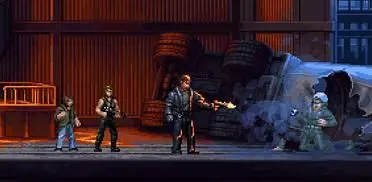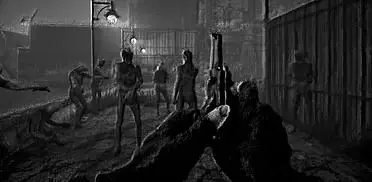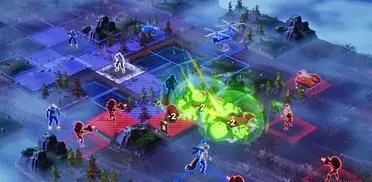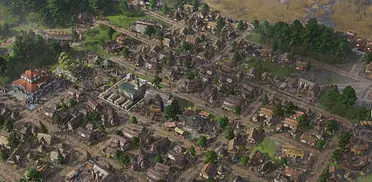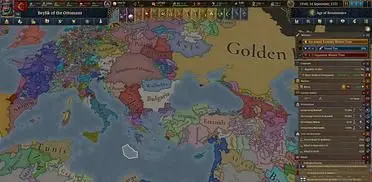Sengoku Jidai portrays one of the most iconic periods of Japanese history, allowing you to take command of armies during the Warring States period and the Imjin War. If you’re already familiar with the details of those conflicts, this is a solid way to live out your fantasies of Asiatic conquest. If you have a more general interest in turn-based strategy, though, the game’s slow-paced, repetitive battles can make playing it a war of attrition.
If you’re a strategy fan, you’re probably familiar with Japan’s Warring States (or Sengoku) period, in which numerous rival clans fought a civil war for control of the nation. The most famous of these leaders was Oda Nobunaga, whose war of conquest is well-documented in historical strategy games. Following Japan’s violent unification, Nobunaga’s successor, Hashiba Hideyoshi, sought to expand the country’s power through the conquest of Korea in what would be known as the Imjin War. Support from China helped Korea to push back the Japanese invasion, and Hideyoshi’s invasion of mainland Asia ultimately failed.
If you found yourself glossing over that paragraph of history, then Sengoku Jidai is probably not for you. Its greatest strength is the accuracy with which it depicts its historical inspirations, with battles based on historical events and authentically-named unit types. For the most part, the parallels with Western unit tactics are clear, and the particular uses of cavalry, spearmen, and swordsmen will be immediately apparent if you’ve played much of any tactics-minded wargame. (Or if you’re familiar with real-world warfare in general.)
Every decision you’ll make is based on unit positioning, and the most important tactics to consider are how to outmaneuver and flank your opponent. Once opposing units have engaged in melee, they’re stuck there until one side or the other sustains enough casualties to be routed. Equal units on equal footing will simply fight to a standstill, so each battle is a matter of ensuring that these individual melees go in favor of your units.
Units gain advantage for things like flanking, favorable terrain, and the state of their morale, and certain unit types have natural advantages over others. Cavalry beat most infantry types, but spearmen can counter mounted charges. Generals on the field improve the combat abilities of the unit they’re with, and improve the morale of all nearby troops under their command. A battle will typically have several generals, each of whom commands a flank of your army, and ensuring they’re in range of their units can be a major difference maker.
There’s a lot of minutiae to the workings of unit movement, and the game doesn’t do a terrific job of surfacing that information in a way that’s easy to process at a glance. For example, a specific enemy might be designated a “priority charge targets” based on their proximity and relative threat to your unit, which means that they’re the only unit you’ll be able to engage in melee. That’s a fine wrinkle to the game system, but there’s no visual indication when you’ve got a priority threat. You’ve got to mouse over each individual enemy until you’ve found the one your unit will attack. Similarly, there’s no visual indication of which units have already moved in a given turn. You can pull up a list that details which units have and have not moved, but that list doesn’t indicate where those units are and who they’re capable of attacking, which can make commanding individual pieces of the battle kind of a mess.
The biggest problem, though, is that large chunks of the fight are out of your control. Waiting for AI opponents to take their turn has always been a problem with turn-based strategy, but Sengoku Jidai compounds the problem by automating much of the action on your side, as well. After your turn is over, the AI determines the outcome of each individual melee, then the opponent takes their turn, then melee outcomes are calculated again, then it comes back to you. Since your units are stuck in melee until they’ve either won or routed, the latter stages of any given battle will often have you spending a good two-thirds of each turn watching the AI make decisions. The hands-off approach is a more realistic depiction of historical command, but it makes the battles dull and repetitive.
There are over 20 historical scenarios, but much of that number is made up of repeated battles that have you controlling different sides of the conflict. A more freeform campaign mode has you waging war in Japan and Korea, but the metagame of conquering territories, raising troops, and managing supplies feels slight and ultimately inconsequential. Skirmishes let you randomly generate battles under given parameters, and a map editor lets you create and fine tune your own scenarios. A variety of difficulty options let you take on encounters in more challenging ways, but for the most part this just means adjusting how many units you start with.
Multiplayer Thoughts
Multiplayer is play-by-email, which is exactly the right fit for this style of turn-based tactics. You can post or accept a challenge in a lobby, then take a turn, and wait for an email notification when your opponent is ready to go. It’s not a particularly exciting or revolutionary method of online play, but it’s an alternative to repeatedly challenging the AI in the same skirmishes and scenarios.
Performance & Graphics
Minimum Requirements
- OS: Windows XP / Vista / 7 / 8/ 10
- Processor: CPU: Intel Pentium 4 or equivalent
- Memory: 1 GB RAM
- Graphics: Graphics: 256MB DirectX card
Featuring thick lines and soft colors, the visuals resemble Japanese watercolor, giving the game a simple but attractive look. The downside of that simplicity is that it can be tough to tell the units apart at a glance, often making it hard to even tell infantry from cavalry without selecting individual units. The modest system requirements mean that if your computer is less than ten years old, you’re probably good to go.
SENGOKU JIDAI: SHADOW OF THE SHOGUN VERDICT
While Sengoku Jidai’s historical accuracy and tactical focus made a strong first impression, I found that the more I played and understood its mechanics, the less I enjoyed it. Battles are often won and lost by the time troops first come into contact with each other, and while that’s not inaccurate to actual warfare, it means that over half of each battle is a dull slog towards an already known resolution, and the game’s various modes don’t add much depth or replayability. Hardcore Japanese history buffs will certainly find some enjoyment here, but it’s tough to recommend to strategy fans in general.
TOP GAME MOMENT
Bringing a force hidden in the woods out to flank the enemy lines. They never saw it coming.
Good vs Bad
- Authentic historical Japanese flavor
- Unique turn-based tactics
- Attractive visuals
- Information is hard to read at a glance
- Modes are lacking in depth and variety
- Large chunks of the battle are out of your control






